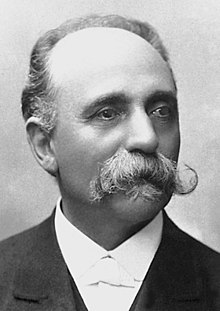
Back Camillo Golgi ALS كاميلو غولجي Arabic كاميلو جولجى ARZ Kamillo Qolci Azerbaijani کامیلو گولجی AZB Каміла Гольджы Byelorussian Камило Голджи Bulgarian কামিল্লো গলজি Bengali/Bangla Camillo Golgi BS Camillo Golgi Catalan
Camillo Golgi | |
|---|---|
 | |
| Born | 7 July 1843 |
| Died | 21 January 1926 (aged 82) |
| Alma mater | University of Pavia |
| Known for | Golgi's method Golgi apparatus Golgi tendon organ Golgi cell Golgi cycles Reticular theory Radial glial cell Perineuronal net |
| Awards | Nobel Prize in Physiology or Medicine (1906) |
| Scientific career | |
| Fields | Pathology Neuroscience |
| Doctoral advisor | Cesare Lombroso |
| Doctoral students | Antonio Pensa |
Camillo Golgi (Italian: [kaˈmillo ˈɡɔldʒi]; 7 July 1843 – 21 January 1926) was an Italian biologist and pathologist known for his works on the central nervous system. He studied medicine at the University of Pavia (where he later spent most of his professional career) between 1860 and 1868 under the tutelage of Cesare Lombroso. Inspired by pathologist Giulio Bizzozero, he pursued research in the nervous system. His discovery of a staining technique called black reaction (sometimes called Golgi's method or Golgi's staining in his honour) in 1873 was a major breakthrough in neuroscience. Several structures and phenomena in anatomy and physiology are named for him, including the Golgi apparatus, the Golgi tendon organ and the Golgi tendon reflex.[1]
Golgi and the Spanish biologist Santiago Ramón y Cajal were jointly given the Nobel Prize in Physiology or Medicine 1906 "in recognition of their work on the structure of the nervous system".[2]
- ^ Gerd Kempermann MD (2001). Adult Neurogenesis (2nd ed.). Oxford University Press. p. 616. ISBN 978-0-19-972969-2.
- ^ "The Nobel Prize in Physiology or Medicine 1906". www.nobelprize.org. Retrieved 22 December 2017.
© MMXXIII Rich X Search. We shall prevail. All rights reserved. Rich X Search